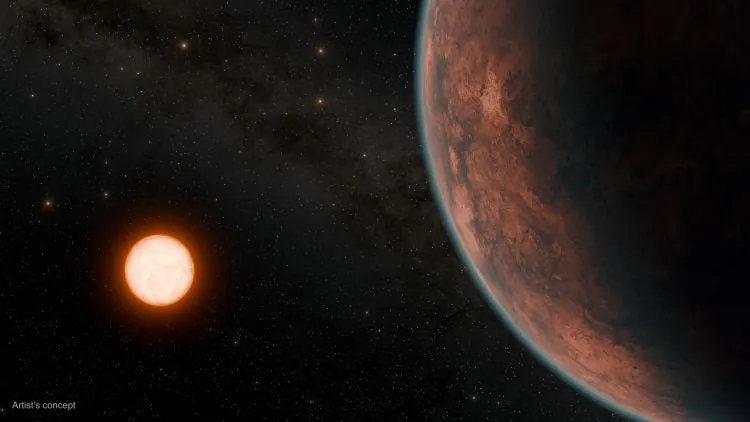
Unveiling GJ 12 b: The Earth-Sized Gem Orbiting a Tranquil Star
2025-06-30
Author: Jacob
A Groundbreaking Discovery in Exoplanet Research
What if a tiny world, just like ours, lurked among the stars? Scientists are buzzing with excitement after the recent discovery of GJ 12 b, an Earth-sized exoplanet that shines a new light on the possibilities of alien life. Located a mere 40 light-years away, this planet boasts temperatures and density strikingly similar to Earth’s, offering a unique opportunity for researchers to unravel the cosmic puzzle of planet formation and evolution.
The Science Behind GJ 12 b
Using the cutting-edge MAROON-X instrument from the University of Chicago, scientists have delved into the characteristics of GJ 12 b, measuring its temperature at about 300 K (approximately 27°C or 80°F) and its size at close to 0.96 times that of our own planet. This discovery was made possible through NASA’s Transiting Exoplanet Survey Satellite (TESS) in 2024, marking a significant leap in our search for Earth-like planets.
What Makes GJ 12 b Special?
The latest research reveals that GJ 12 b has a mass around 0.71 times that of Earth and an eccentricity of 0.16—considerably more circular than many other exoplanets, making it a prime candidate for studying atmospheres. Scientists speculate that GJ 12 b may possess water or other volatile components, which could contribute to a thicker atmosphere. However, they caution that its lower mass might pose challenges for retaining such an atmosphere without frequent replenishment.
Comparing Habitable Zones
GJ 12 b orbits within the habitable zone of its star—a quieter M dwarf—differentiating it from the TRAPPIST-1 system, which features multiple Earth-sized planets but suffers from greater stellar activity. While GJ 12 b stands alone in its system at the moment, its peaceful stellar environment may aid future explorations of its atmospheric properties, offering insights that are difficult to explore in more turbulent systems.
Tools of Discovery: MAROON-X and Beyond
The MAROON-X instrument, operational at the International Gemini Observatory, employs a technique known as the radial velocity method to gauge exoplanet characteristics by analyzing star 'wobbles.' This method has previously helped uncover mini-Earths in proximity to Barnard’s Star, expanding our understanding of nearby planetary systems.
The Road Ahead in Exoplanet Exploration
As the count of confirmed exoplanets heads toward the milestone of 6,000, the quest for understanding Earth-sized worlds like GJ 12 b is ramping up. What marvels await us in the continuing exploration of these distant planets? Only time will reveal the secrets of GJ 12 b and its celestial siblings. In the grand arena of science, we persist in our search—eyes turned skyward!









 Brasil (PT)
Brasil (PT)
 Canada (EN)
Canada (EN)
 Chile (ES)
Chile (ES)
 Česko (CS)
Česko (CS)
 대한민국 (KO)
대한민국 (KO)
 España (ES)
España (ES)
 France (FR)
France (FR)
 Hong Kong (EN)
Hong Kong (EN)
 Italia (IT)
Italia (IT)
 日本 (JA)
日本 (JA)
 Magyarország (HU)
Magyarország (HU)
 Norge (NO)
Norge (NO)
 Polska (PL)
Polska (PL)
 Schweiz (DE)
Schweiz (DE)
 Singapore (EN)
Singapore (EN)
 Sverige (SV)
Sverige (SV)
 Suomi (FI)
Suomi (FI)
 Türkiye (TR)
Türkiye (TR)
 الإمارات العربية المتحدة (AR)
الإمارات العربية المتحدة (AR)